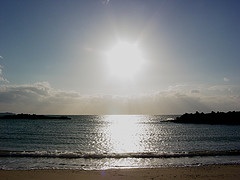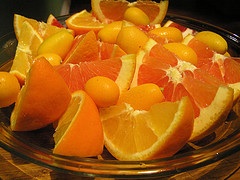|
Migraines: Finding help for Chronic Pain Management "Oh, my aching head!" That's what over 28 million people are saying. Migraines cause suffering in 11% of Americans, with half of them undiagnosed. Women have them three times more often than men. No ordinary headaches, these often result in
How it happens: Though experts aren't exactly sure what is the cause, they suspect irritated nerve endings in the brain. This leads to the release of chemicals, which in turn inflames nerve endings. Next, blood vessels on the surface of the brain swell. Final result: Pain. So, are yours migraines or tension-type headaches? Take this Quiz to Find Out Look over these questions. Answer them based on the type of headaches that interfere most with your daily activities. Choose only one answer per line. Pain Symptoms Is the pain moderate to severe? Pounding, throbbing, or pulsating pain? Worse pain when you bend over or move? Is pain worse on one side of your head? Associated symptoms Sensitivity to light and sound? Nausea or vomiting? Answered these questions? Good. What do your answers mean? A "usually" or "always" answer to at least two Pain Symptoms, and at least one of the Associated Symptoms leads you to the next step: If you've had at least 5 of these bad headaches, and then your headaches could actually be migraines. Keep reading for valuable ideas to help isolate triggers for these painful inflammations, as well as a wide variety of alternative and complementary treatment options. Are you Avoiding these common migraine Triggers? You may be able to head off the pain before it starts, if you spot certain culprits from the list below. Also, the migraine headache diary further down this page will enable you to see patterns such as triggers. Foods and Drink Triggers - Alcoholic drinks, particularly beer, whiskey, champagne, and red wine You can start by avoiding these triggers. To help pinpoint which may be a problem for you, add them back into your diet one at a time. Environmental triggers - strong smells--pleasant or unpleasant--such as perfumes, cleaning supplies, cigarette smoke. Individual triggers - Stress--whether physical or emotional. Sometimes the headache starts as soon as the stress ends, which is why migraines often happen on weekends and holidays. 
Alternative and Natural Health TipsYou may be able to reduce migraine frequency, lessen the pain itself, or head them off altogether. Acupuncture, biofeedback, massage, and relaxation itself are all effective treatments for migraines. Acupuncture practitioners will apply thin needles, heat, pressure or electric current to certain spots on the body for pain relief. For more information, see acupuncture.
Biofeedback uses equipment that shows changes in your body that happen when you're tense...heart rate, blood pressure, skin temperature, and muscle tension may change. With practice, you then learn to change your responses to stress. Massage relieves tension, helping you relax. Some people find pain relief by having a massage during a migraine. Others find periodic stress relief prevents or reduces the frequency of their headaches. Relaxation techniques include: yoga, guided imagery, muscle relaxation and deep or rhythmic breathing. For more information on pain management through yoga, as well as tips for beginning this practice, see our page on yoga! Migraine DiaryFollow this handy format to track your headaches. For each headache, note
Your Best HelpThese natural treatment options can be used alone, in combination with each other, or as a complement to traditional medicine. Perhaps an ibuprofen then some deep breathing and yoga! Authors Peter Van Houten, M.D. and Rich McCord, Ph.D., put together a small book of instructions using a form of yoga complete with slow movement and mental affirmations, Yoga Therapy: Healing Therapies for Headache Relief. Taking notice of your pattern of pain---and what is most effective in relieving that pain---will point you toward which treatments to try. Experiment...and track your results... to reveal what works best for you.
|






